Top image: HMS Hartland (formerly USS Pontchartrain) sinking in the Oran Harbor. She was fatally damaged attempting to insert Allied commandoes to seize the port’s defenses hours before the initial Operation TORCH landings. (Imperial War Museum photo, IWM A 14013)
Before the bulk of Allied forces came ashore on the North African coast on November 8, 1942, a special commando force had already made its way to the port at Oran, Algeria. Preceding Operation TORCH’s amphibious assaults’ Center Task Force (CTF), the early morning darkness provided cover for a joint and combined team of American and British commandoes. Embarked on two small Royal Navy vessels, the men were on what many considered a “suicide mission.” Under the code name “RESERVIST,” the commandoes’ mission that morning was threefold: to seize the harbor’s defensive positions, safeguard the waterfront facility, and prevent the scuttling of merchant ships by occupying French Vichy troops. Using speed and stealth, the Allies hoped to capture the port intact and then use it for subsequent operations against the German Afrika Korps. Leading an element of this amphibious infiltration was Lieutenant Colonel George F. Marshall.
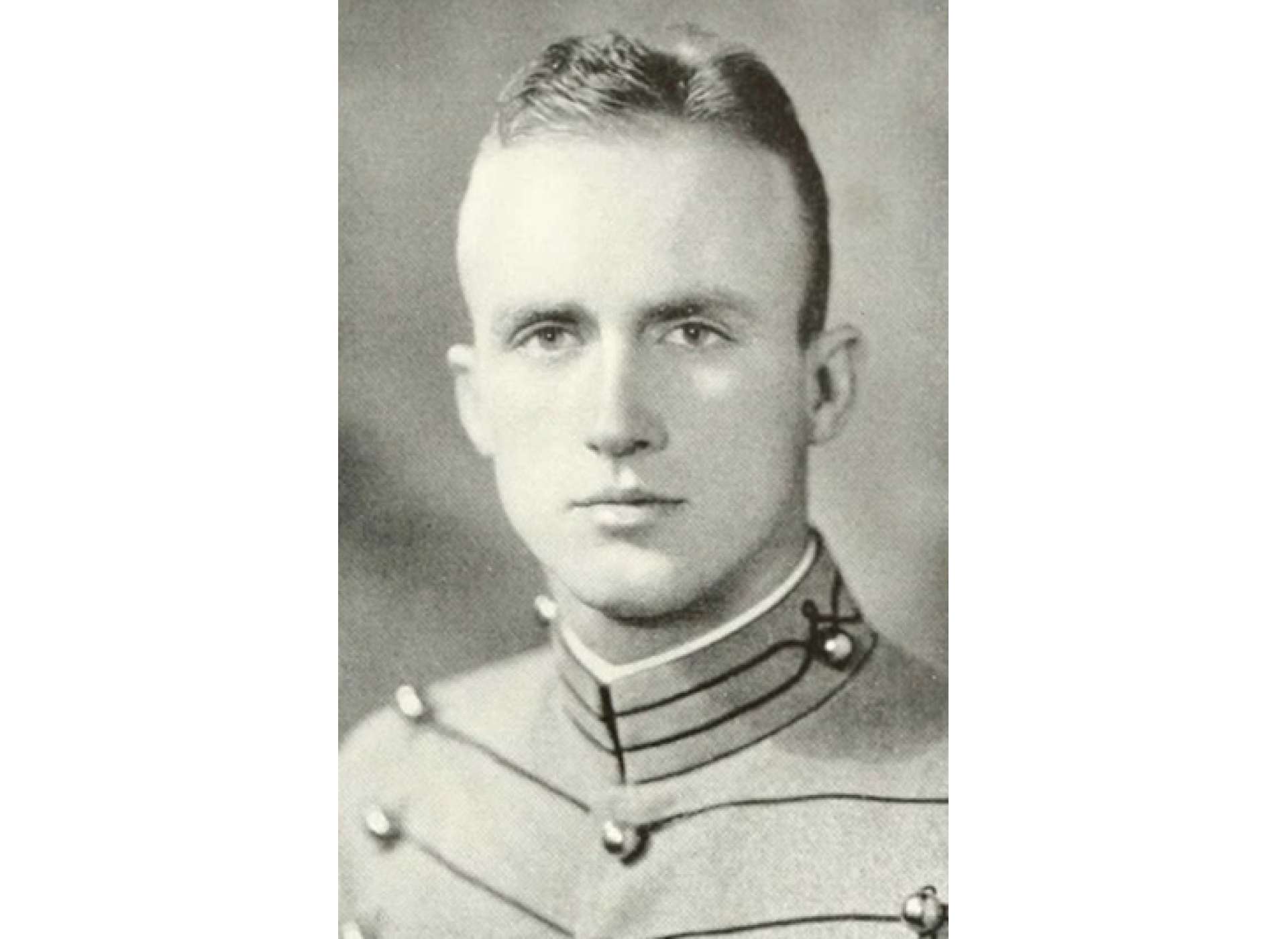
Cadet George Marshall at West Point. Graduating in 1935, Lieutenant Colonel Marshall would lead the Army contingent during the commando assault on the Oran port in the early morning of November 8, 1942.
Born in Jacksonville Florida on November 22, 1910, and after short stints at the Universities of Florida and Edinburgh, Marshall eventually made his way to West Point and joined the “long gray line.” A member of the class of 1935, he was noted by his classmates as having a “cool and collected manner in the face of any circumstance while maintaining a soldierly appearance.” “Uncle Obie,” as he was known to his fellow cadets, was commissioned in the Infantry after graduation and served in a number of stateside assignments before seeking orders overseas. Stationed in the Philippines, Marshall served as part of the 57th Infantry (Philippine Scouts) and subsequently returned to the states. Next at Fort Benning, he served with the Infantry School in 1940, followed by his attendance at the Army’s Tank Course. Serving with the 1st Infantry Division, he was transferred to the 2nd Armored Division and rose quickly from company commander to battalion executive officer and then battalion commander for the 41st Armored Infantry.
Recognized for his professionalism and soldierly bearing, he was requested by name to join the newly created 1st Armored Division. With the United States’ entry into the war, Marshall was soon scheduled for overseas movement, promoted to the grade of Lieutenant Colonel, and placed in command of 3d Battalion, 6th Armored Infantry. Sent to Northern Ireland in anticipation of deployment to the North African campaign, Marshall’s professional reputation saw him called to London for a special assignment. Upon arrival, he was given the task to secure the Oran port. While a difficult mission, he was hand-picked to lead one of the nation’s first combat actions in the Mediterranean Theater of Operations (MTO).
The RESERVIST plan called for Allied raiders to first penetrate the harbor’s thin floating 300-foot defensive boom using two Royal Navy cutters. This required braving the occupying Vichy forces array of heavy guns defending the port and its narrow entrance. Once within the port’s 3,000-foot breakwater, the two ships would navigate the ports four moles while small teams of men debarked onto motored launches. Landing ashore, the combined force of commandoes would conduct its threefold mission. Training for the mission in Ireland, the joint and combined raiding party included US Navy, Marine, and Army personnel along with Royal Navy sailors. Adding to the combined effort, the two Royal Navy cutters used in the operation were originally US Coast Guard Lake Class vessels. Initially named Sebago and Pontchartrain, the ships were transferred to the United Kingdom under Lend-Lease in 1941 and rechristened HMS Walney and Hartland.
-

HMS Walney, originally a US Coast Guard cutter (USS Sebago), was transferred to the Royal Navy in 1941 under Lend-Lease. She led the assault into the Oran Port on November 8, 1942, but met an unfortunate fate, sinking short of her intended objective. (Imperial War Museum photo, IWM A 5322
-

Hoping the Vichy French defenders might surrender and embrace the Allies as partners, both ships flew large British and American ensigns. Walney and Hartland moved inland at 0245 with the morning darkness providing good concealment. However, French forces were already aware of the larger TORCH flotilla in the area with sentries on the alert in no mood to embrace the invaders. With Walney in the lead, the two ships advanced in the early morning calm only to have it pierced by the sound of alarms and the flash of searchlights illuminating the inbound ships.
The Vichy troops at the eastern defensive position of Ravin Blanc engaged the Allied vessels as tracer rounds streaked ahead of Walney’s bow. Once a Vichy searchlight found Walney, coastal artillery engaged. French 4.7- and 3-inch guns found their mark with rounds striking the ship and throwing men to the deck. Given the accurate incoming fire, Walney’s skipper withdrew by turning north with both vessels sending out smoke screens. Steaming around, she set up for a second attempt at the port’s narrow opening.
On the next approach Walney breached the entrance boom as small arms fire struck the vessel. Continuing into the port, she made her way past a floating dry dock to her starboard and two moles on her portside. Moving along the breakwater, she took fire from both ground- and ship-based fire while a French destroyer came at the cutter. The two ships appeared to head for a collision but narrowly missed each other and only scraped hulls. During the near collision, the French destroyer’s point-blank fire raked the British ship, igniting ammunition and creating dozens of casualties. Receiving additional fire from other Vichy ships in the port, Walney continued to her objective at the harbor’s head.
Given the developing situation, Marshall made his way to the bridge to assist as incoming fire grew more violent. French rounds killed every officer on Walney’s bridge except for Marshall and damaged much of the ship’s superstructure. Assuming control of the situation and under heavy fire, he encouraged his men to continue the fight, directing their actions until he too fell mortally wounded. With the severely damaged ship aflame, it traveled to the port’s western end and eventually sunk. The remaining compliment abandoned ship, with survivors swimming to shore to an adjacent jetty.
HMS Hartland suffered a similar fate. Following Walney, she too received heavy coastal artillery fire and ran aground south of the port’s entry. Able to recover, she eventually breached the defensive boom and made it into the port, although the ship’s captain had been blinded by a shell splinter. At 0345 and making for the first mole, Hartland passed the moored French destroyer Typhon. Alert to the assault, the French vessel engaged with 4.7inch guns at point blank range. With continued salvoes from other French defenders, the British ship was set ablaze and fatally damaged. By 0410, the fires and following explosions caused the ship to careen out of control as the captain ordered the crew to abandon ship. By 0800, the cutter finally exploded and sank. Almost half of the men aboard Hartland were killed with survivors taken prisoner.
Of the 17 officers and 376 enlisted men from the 3rd Battalion, 6th Armored Infantry, nine officers and 180 enlisted men were killed, with another five officers and 152 enlisted men wounded. Those captured were held as prisoners of war as the battles for Oran raged around them and were eventually released upon Allied liberation of the city. Meanwhile, French defenders did exactly what Allied planners feared. After the attack, Vichy troops sabotaged port facilities, scuttled ships, and blocked the harbor with three floating dry-docks, three submarines, and 25 other vessels put out of commission. While the Allies eventually obtained the facility, the entire episode was a dismal failure.
Despite the result, and with his remains unrecovered, LTC Marshall posthumously received the Distinguished Service Cross, the second highest award for valor. Recognizing his courage under fire, his citation read, “for outstanding performance of duty…in the face of great odds and with no expectancy of aid, the actions of the battalion was marked by gallantry, fearlessness, and devotion to duty.” During a commemoration ceremony in Washington, D.C., on March 17, 1943, Marshall’s widow received her husband’s award and pinned it on their son, George F. Marshall Jr. LTC Marshall is listed on the “Tablet of the Missing” at the North Africa American Cemetery and Memorial in Tunisia.
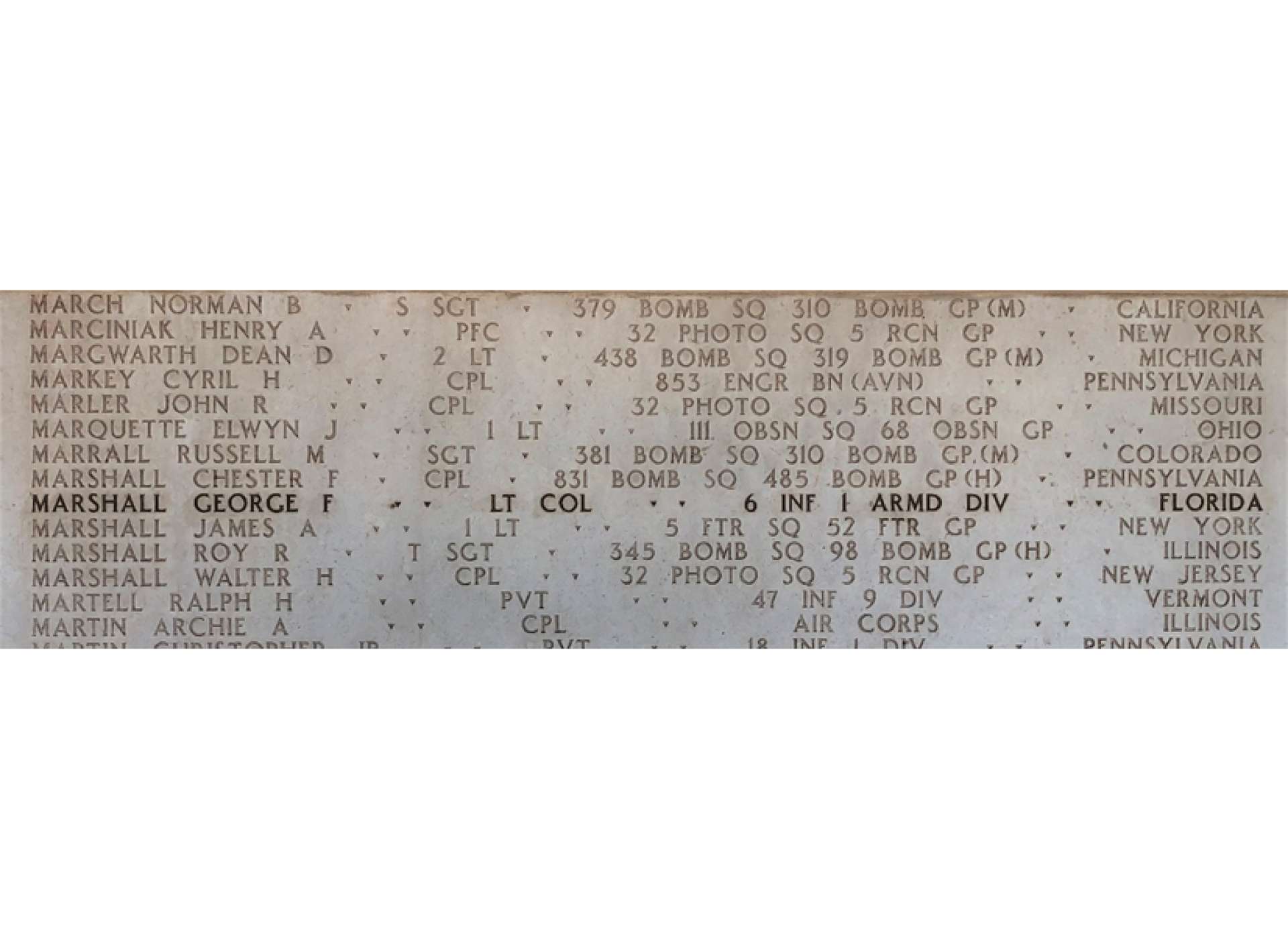
LTC Marshall’s name as it appears on the “Tablet of the Missing” at the North African American Cemetery in Tunisia. (American Battle Monuments Commission photo)
In further recognition of his gallantry, Marshall Park in Raleigh, North Carolina, is dedicated in his honor as is the 1st Armored Division’s parade ground at Ft. Benning, Georgia. As one of the first casualties in the MTO, LTC Marshall was unfortunately followed by thousands more Americans who gave their lives for the eventual defeat of Fascism, the safeguarding of democracy, and the preservation of the American way of life.
LTC George Marshall’s son wearing his father’s Distinguished Service Cross with his mother and an unnamed officer present. (National WWII Museum Photo)
John Curatola, PhD
John Curatola, PhD, is the Samuel Zemurray Stone Senior Historian at the Jenny Craig Institute for the Study of War and Democracy.
Cite this article:
MLA Citation:
APA Citation:
Chicago Style Citation:
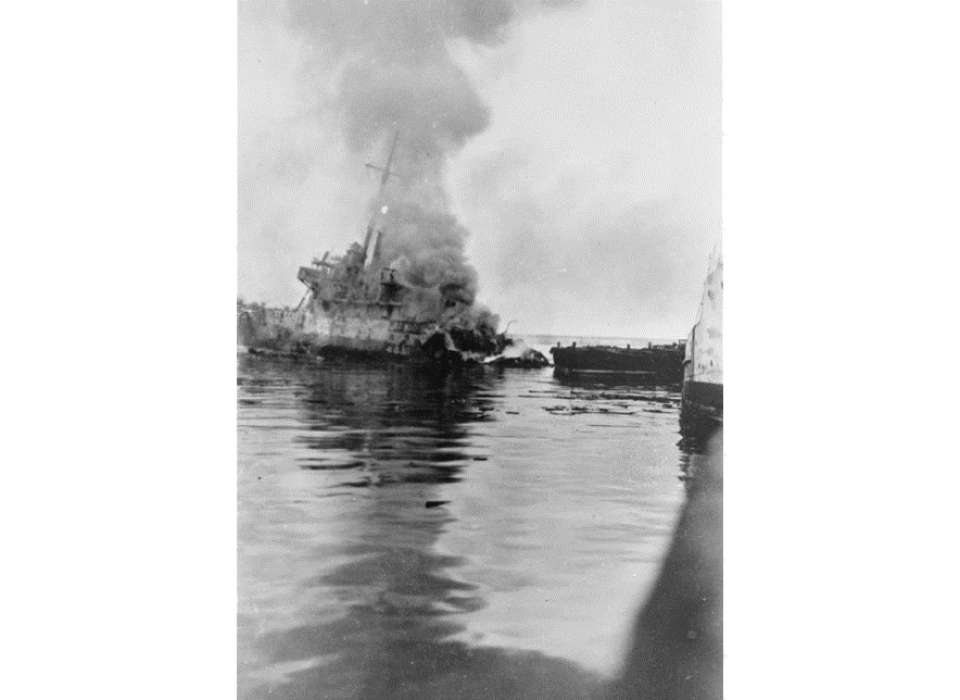
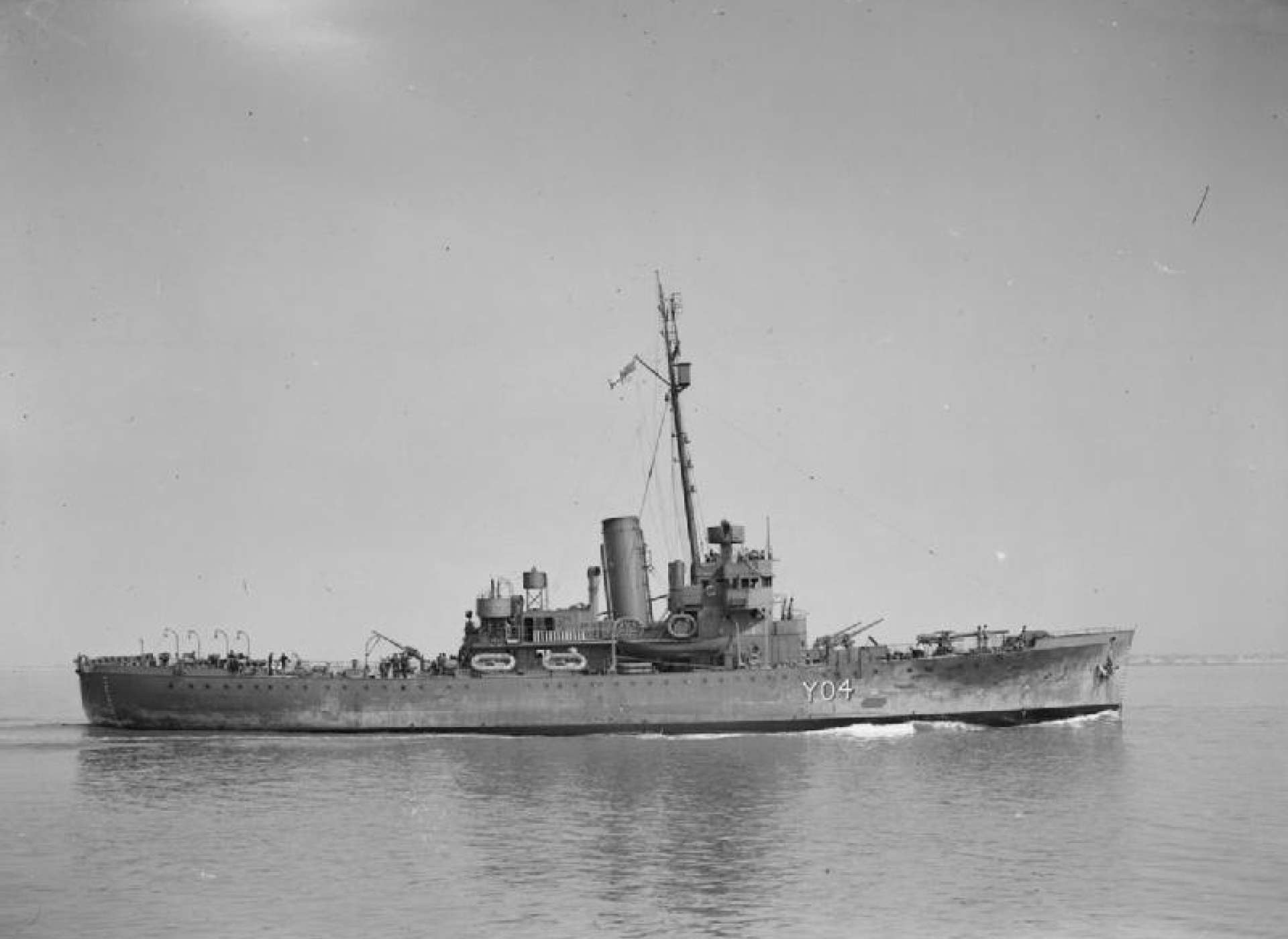
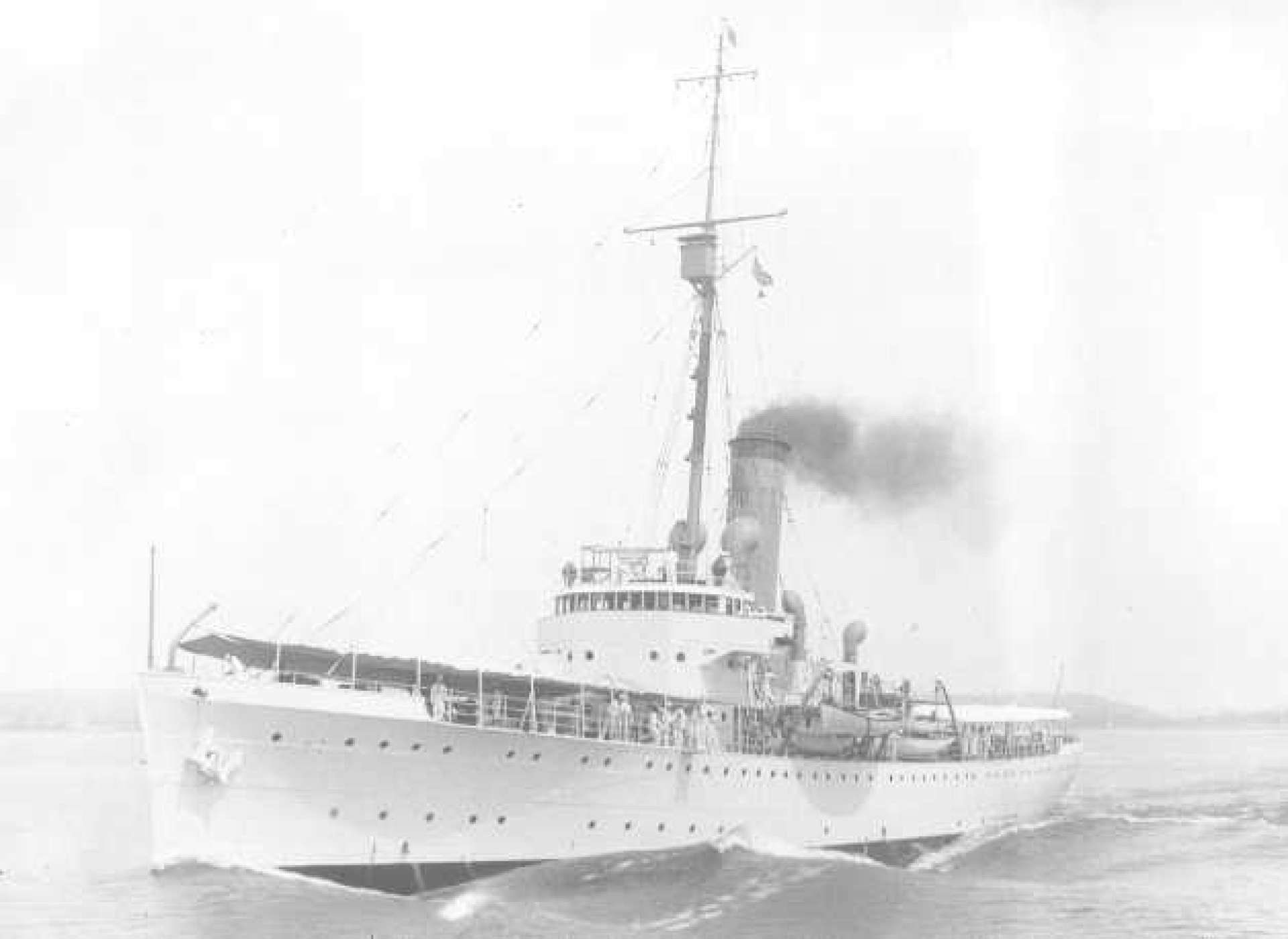
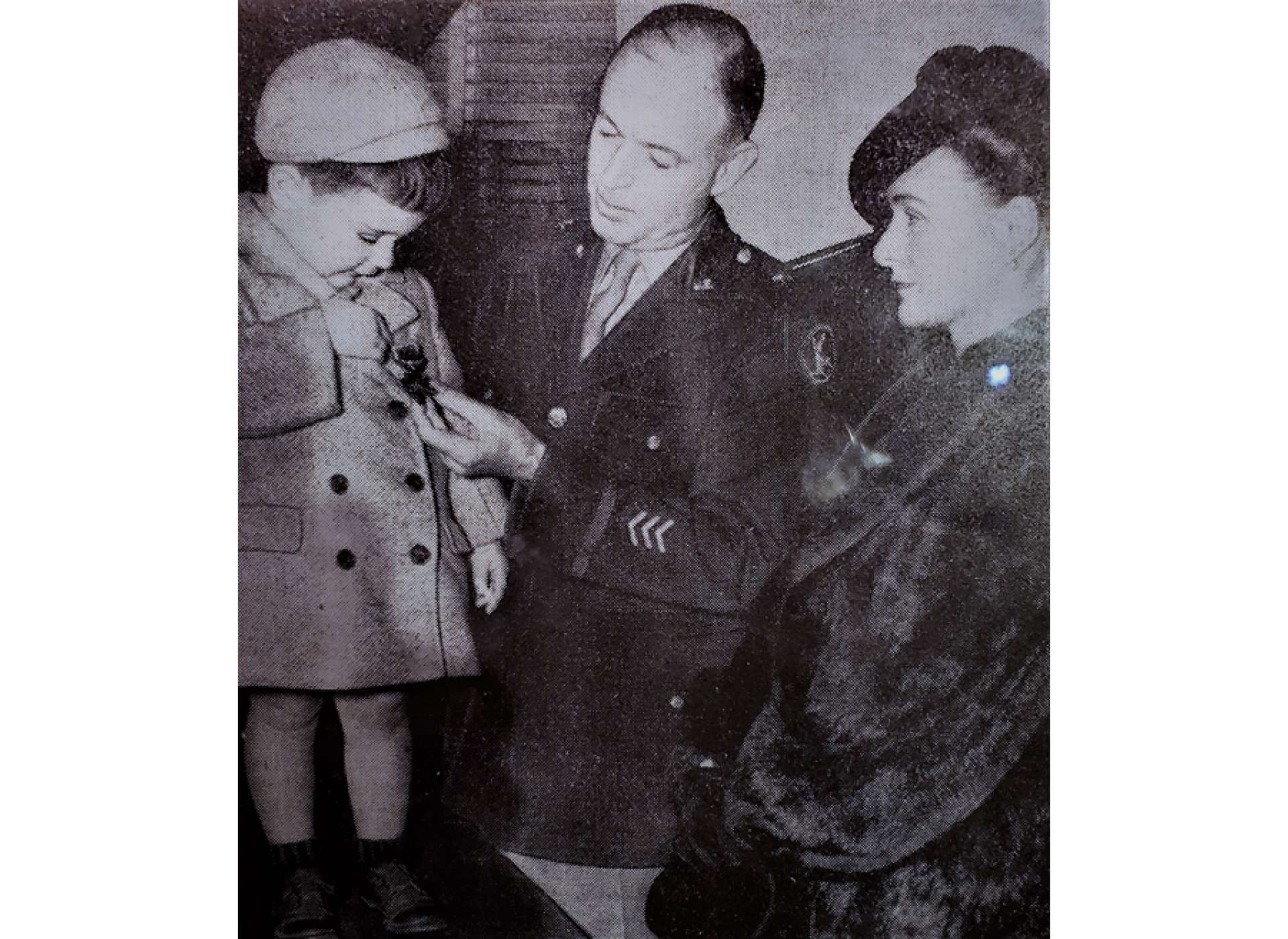
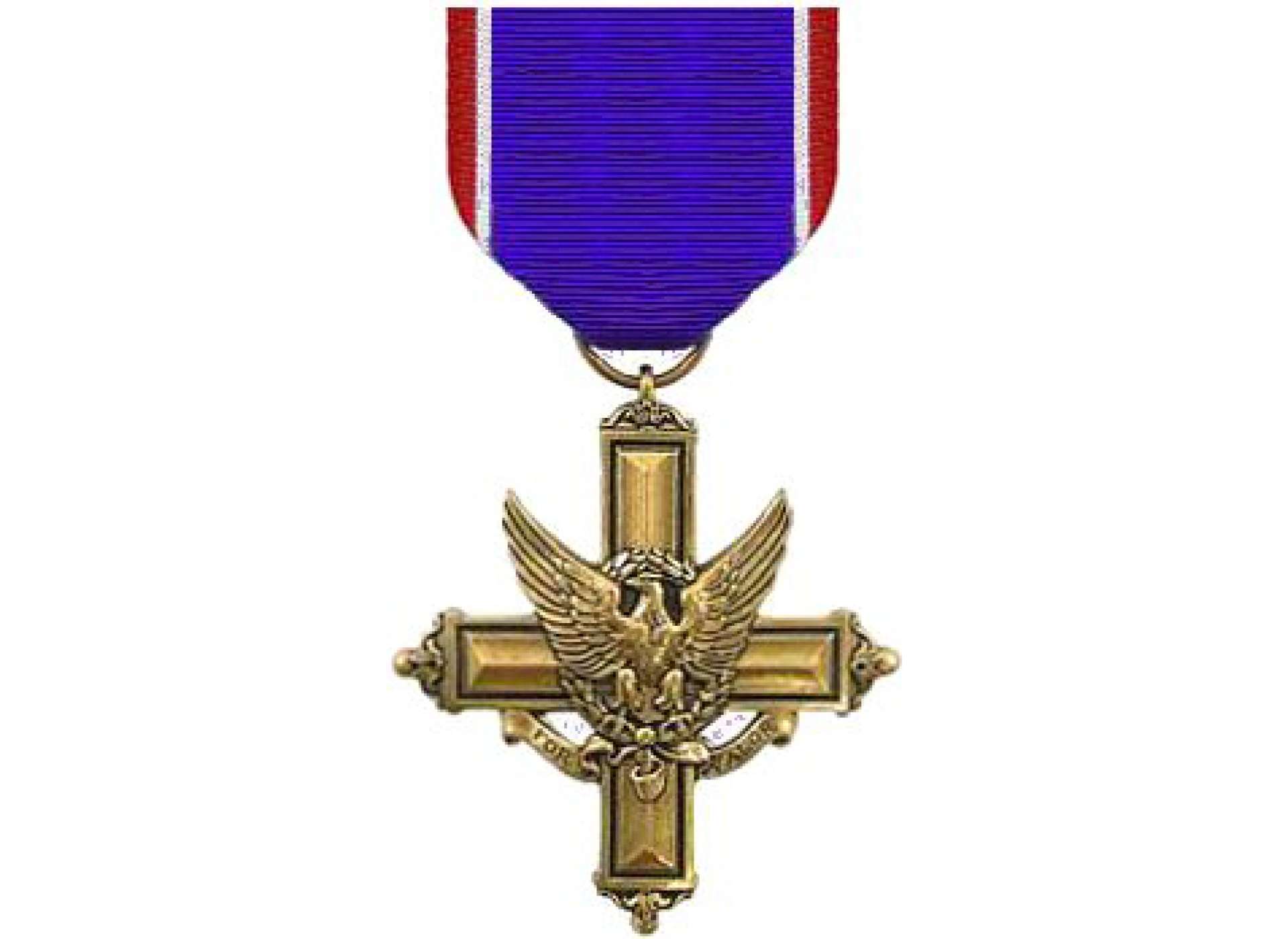




![Max Fuchs, New York City cantor, sings as Rabbi Sydney [sic] Lefkowitz, Richmond, VA, conducts the first Jewish services from Germany.](/sites/default/files/styles/max_650x650/public/2025-10/image1.jpg)



